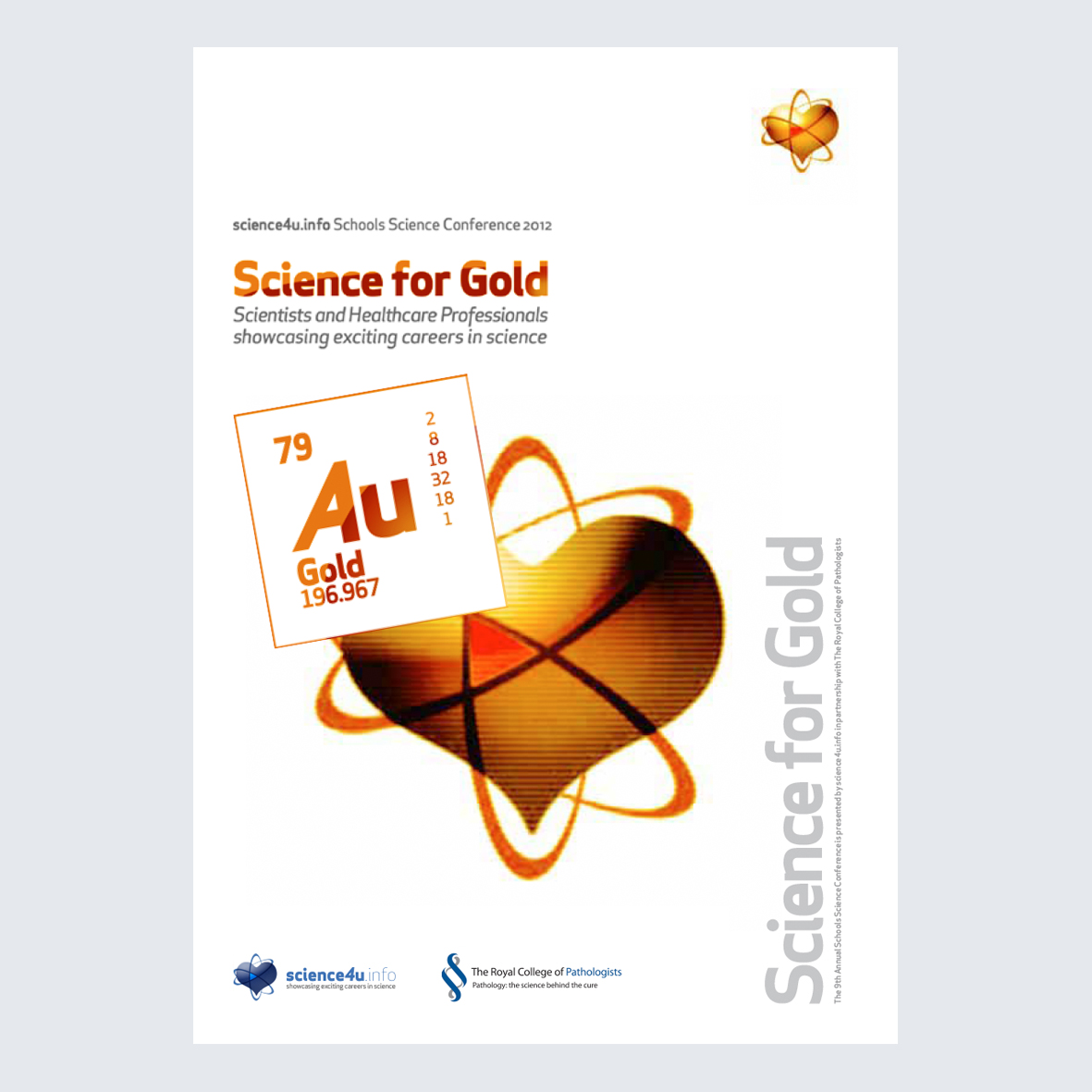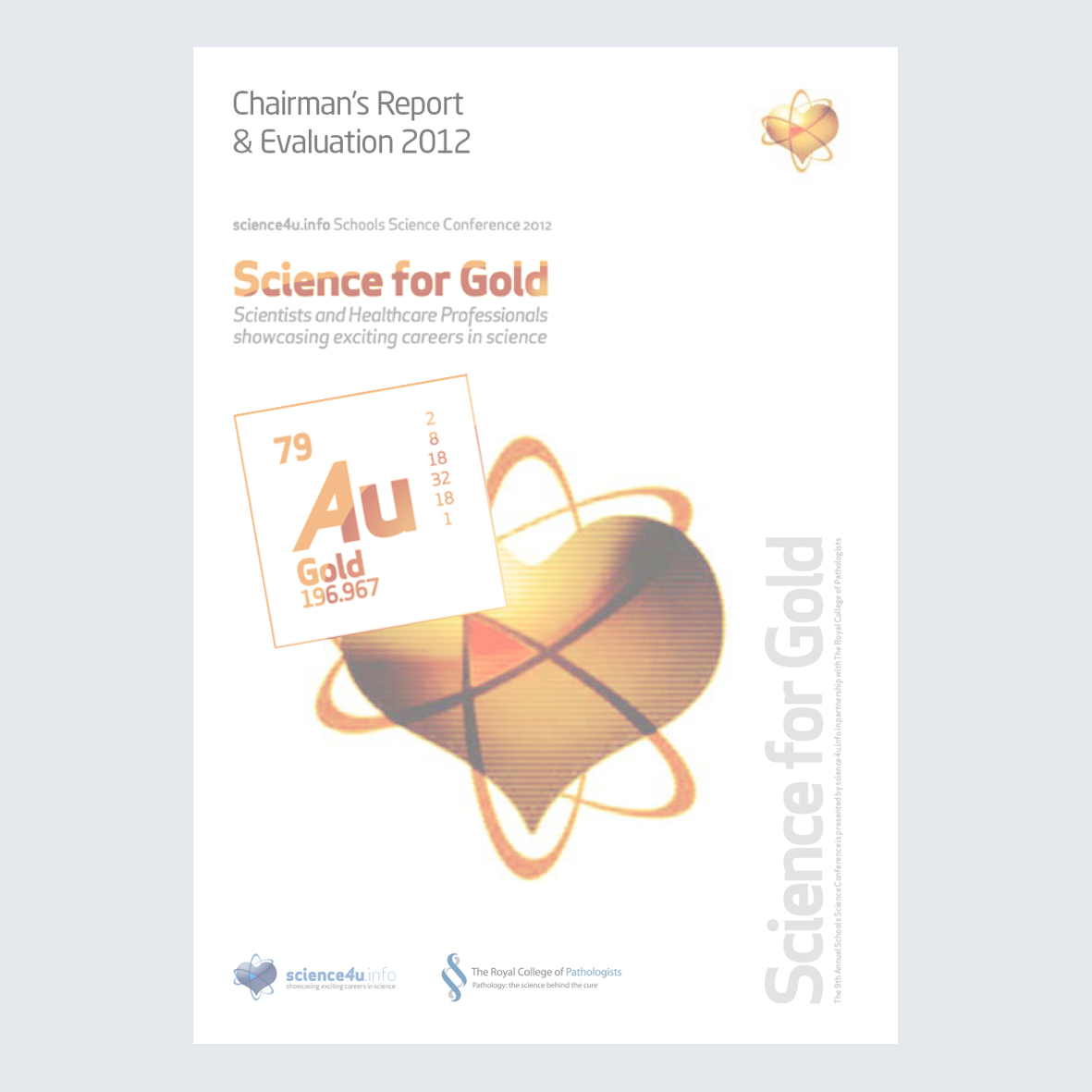Science for Gold
The 9th Annual Schools Science Conference was held on 20th March 2012 at The Royal College of Pathologists
Or scroll down to find out more

Welcome to
Science for Gold
The theme of the 9th Schools Science Conference is Science for Gold
The focus is about demonstrating that science is rewarding, science improves performance and science ensures that the best is achievable.
The conference will be a mixture of presentations, workshops, interactive hands-on demonstrations and displays.
Here are some facts about gold …
- Overview
Origin of the name Anglo-Saxon word for the metal; the symbol comes from the Latin ‘aurum’, gold.- Discovery date Around 3000 BCE
- Group 11
- Period 6
- Block d
- Atomic number 79
- State at room temperature Solid
- Electron configuration [Xe] 4f145d106s1
- Melting point 1064.18 °C
- Boiling point 2836 °C
- Density (kg m-3) 19281
- Relative atomic mass 196.967
- Key isotopes 197Au
- Scarcity factor 5.5
- Crustal abundance (ppm) 0.0013
- Natural abundance
- Gold is found in nature both uncombined in veins and in alluvial deposits. About two thirds of the world’s output comes from South Africa. Refining is usually by electrolysis, but gold in ores is recovered by a smelting process.
- About 1500 tonnes of gold are mined each year, chiefly in South Africa and Russia, and most of this is stored as bullion.
- There is a lot of gold in the sea, but with only 4 gram in 1,000,000 tonnes of seawater, schemes to reclaim gold from the oceans have always failed.
- Appearance
- A soft metal with a characteristic colour and, since it is chemically unreactive, one of the few elements to occur in a natural state.
- It will dissolve in aqua regia (royal water), a mixture of nitric and hydrochloric acids.
- Alchemical Symbol
- Gold is one of the seven metals of alchemy (gold, silver, mercury, copper, lead, iron & tin).
- For the alchemist, it represented perfection of all matter on any level, including that of the mind, spirit, and soul.
- The symbol for gold could also be used to represent the sun in astrology.
- Uses
- Gold is used for coinage and is a standard for monetary systems in some countries. It is also used extensively in jewellery.
- The term carat expresses the amount of gold present in an alloy; 24 carat is pure gold, and most jewellery is 9 carat gold.
- Gold is used in dental work, and the isotope 198Au, with a half-life of 2.7 days, is used for treating cancer.
- A gold compound is used in certain cases to treat arthritis.
- Another use is in jewellery, and some is also employed in the electronics industry and to colour glass or make it reflect heat.
- It can be beaten into very thin sheets (gold leaf) to be used in art, for decoration and as architectural ornament.
- Biological role
- Gold has no known biological role, and is non-toxic.
Overview in pictures
A glimpse of the fun, enjoyment and rich array of activities at Science for Gold

Science for Experimentation
Witness riveting presentations and we unveil which school clinched the coveted trophy

Photographs
Explore captivating snapshots captured during this year’s Conference

Quiz
Challenge yourself and put your newfound science and healthcare knowledge to the test

Programme
Discover more about the sessions and view a digital version of the programme

Evaluation
Delve into the reception and gauge the resounding acclaim achieved by the Conference

Reporter Competition
Read the fantastic reports that effectively captured the excitement of the day

Acknowledgements
A heartfelt thank you to all the contributors who have brought this event to life

Organising Group
Meet the visionary minds steering Science for Gold: the Committee members










